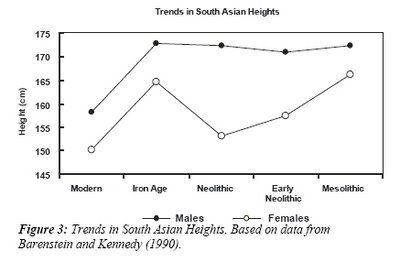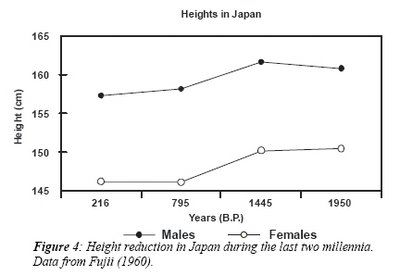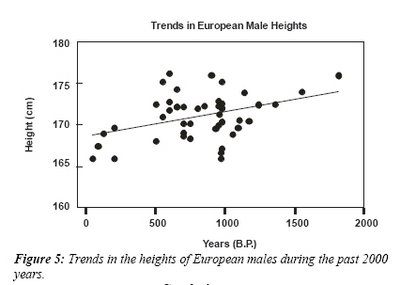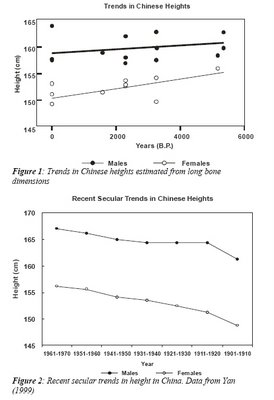|
Friday, October 17, 2008
In the posts below I wanted to make clear my assumption that morbidity was likely more prevalent during the Neolithic than the Paleolithic. This does not mean of course that the Neolithic people were necessarily poorer than the Paleolithic peoples; Greg Cochran recently told me that people got healthier for obvious reasons during the Great Depression. I would not be surprised if the rate of mortality was somewhat higher than during the Paleolithic simply because the hunter-gatherer lifestyle had less buffering against disasters because trade and social networks were poorly developed so that environmental variation took a greater toll.
For me the biggest point to favor the idea of increased morbidity is that heights seem to have decreased after the Neolithic revolution. It seems plausible that nutritional shifts are the main reason that humans would shrink in size. Below the fold I have reproduced some charts from various papers for your reference.     The cite is Long Bone Dimensions as an Index of Socioeconomic Change in Ancient Asian Populations. Of course, height is not the only thing that changed. From Stature in Early Europeans: ...The sexual dimorphism creased in the more recent populations. Upper Palaeolithic humans not only were taller and had more robust bones in comaprison with the LInear Band Pottery Culture Neolithic people; they also had longer lims, a shorter trunk, and similar to modern African people, very long forearms and crural segments. The low brachial index is a very recently acquired characteristic of white Europeans. Agricultural populations as a whole have shifted toward a less robust physique. The increase in height due to better nutrition doesn't seem to have resulted in a more robusticity or a Palaeolithic dentition. So there may be some biological evolutionary parameters at work here as well. The first paper notes that between region differences in height seem to persist over long periods of time (East Asians are smaller). Phenomena such as Bergmann's rule point to changes in body form and size correlating with climatic shifts, and certainly the rise of agriculture is coincident with our current Interglacial. Labels: anthropology, height |



